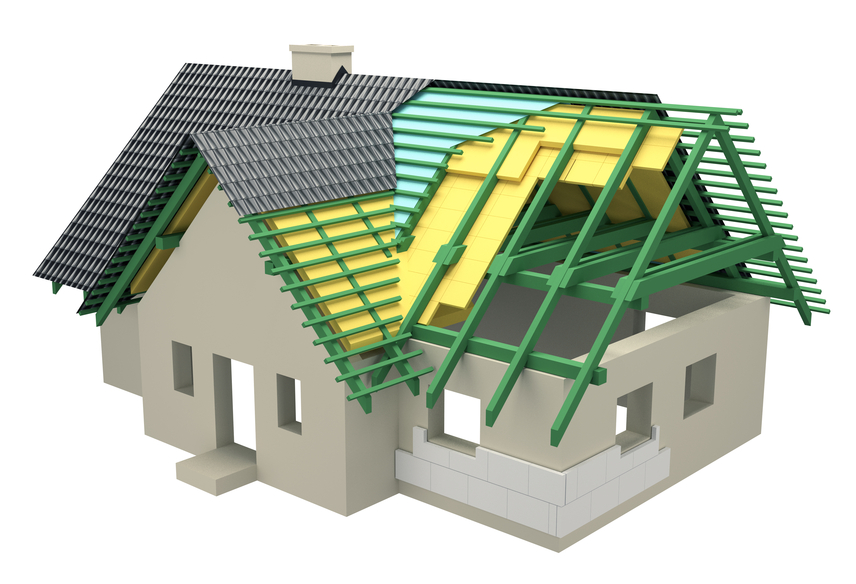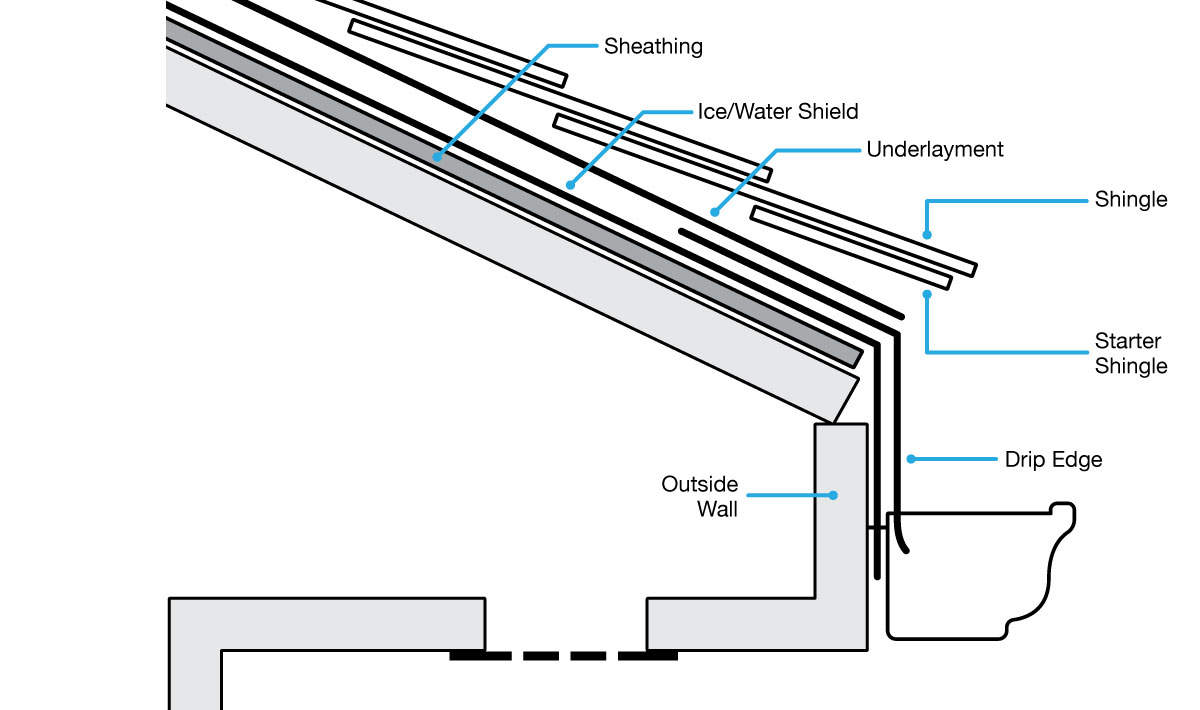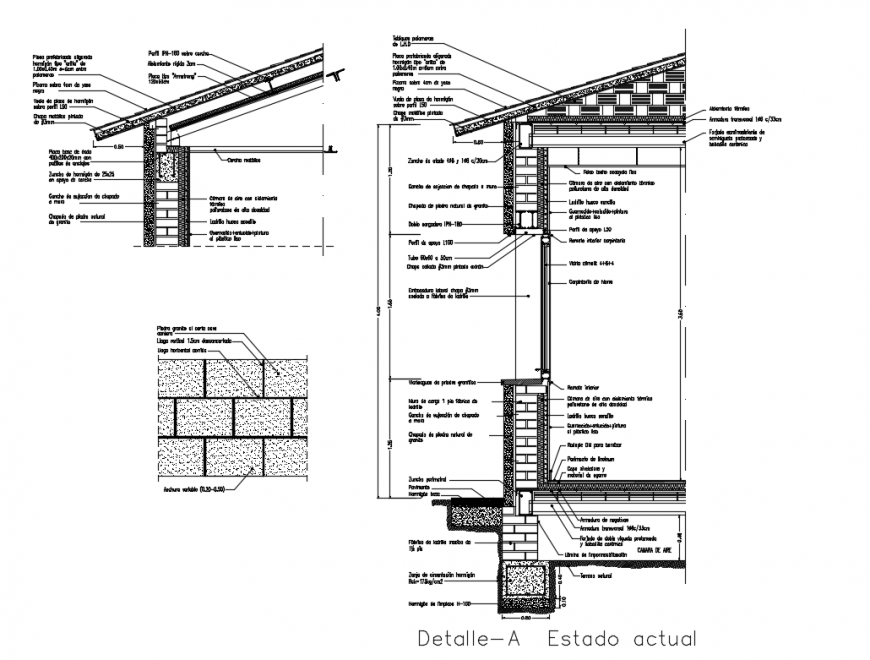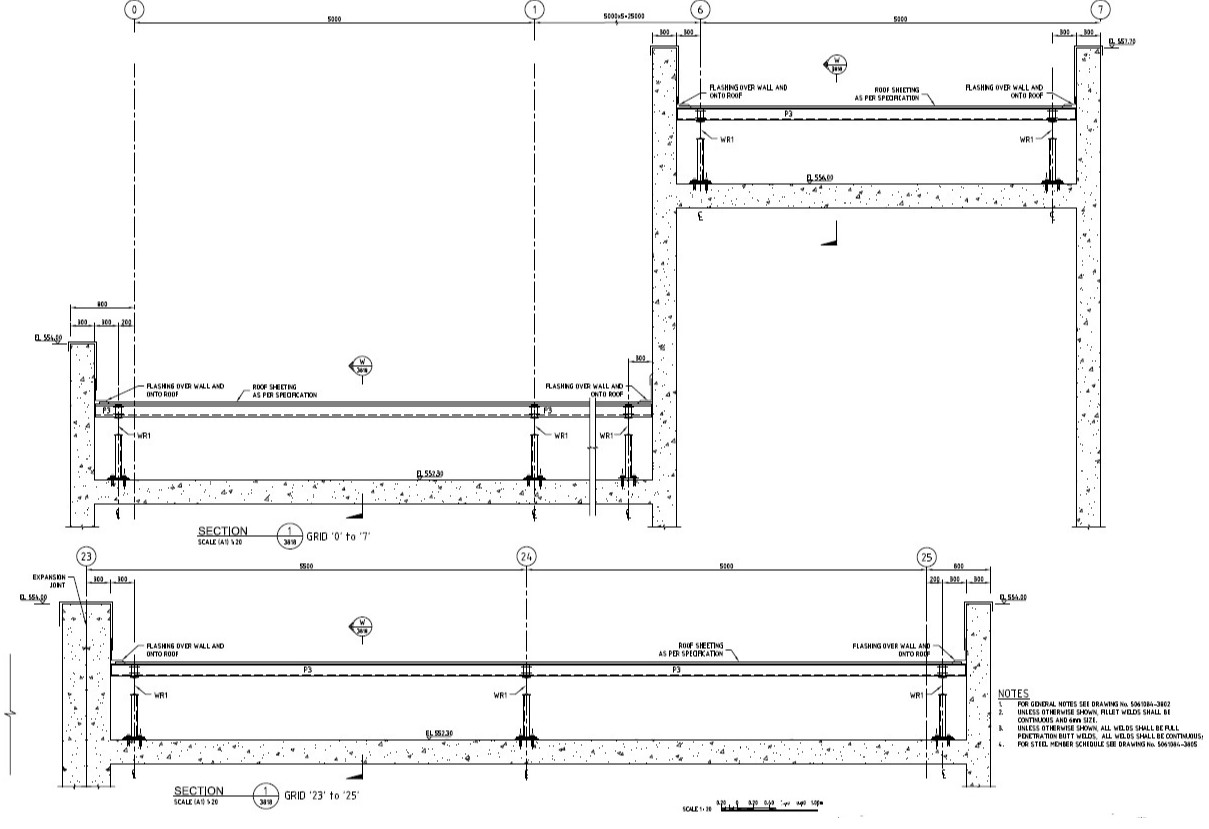Roof Cross Section Design PDF File Cadbull

Construction Drawings A visual road map for your building project Roof architecture, Roof
24. Cross Hipped Roof Design. A cross hipped roof is a common roof type, with perpendicular hip sections that form an "L" or "T" shape in the roof hip. This is a great option for buildings with more complex layout than a simple rectangular of square, and is a type of roof that will hold well in rain, snow or windy conditions.

skillion roof plan Google Search Roof design, Skillion roof, Roof
Nancy Andrews This house appears to have two gable roofs, but only if you drive by quickly. The real roof has a very low pitch. The gables are false fronts, similar to the showy facades often found on small commercial buildings. Their only purpose is to change the look of the house. L-Shaped Gable Nancy Andrews

Cross Section and Scheme of Ceramic Tiles Roof. Roof Cover in Layers Isolated on White Stock
Green roofs are a layered combination of vegetation and membrane over a building that can help insulate and provide water management. But understanding green roofs can be tricky, as it's a delicate balance between living and man-made systems.

EPDM Rubber Roofing FAQs Carson City Roofing Contractor Coyne Roofing
The truss roof is a structural roof system spanning between 2 supports and carrying loads like wind, snow and live load. Compared to other trusses, the truss roof is usually inclined from the supports towards the midpoint. It consists of top chord, bottom chord, diagonals and connections. Statically speaking are the top and bottom chords beams.

36 Types of Roofs (Styles) for Houses (Illustrated Roof Design Examples) Home Stratosphere
1. A-Frame Roof 2. Barrel Vaulted Roof 3. Bell Roof 4.Box Gable Roof 5. Butterfly Roof 6. Clerestory Roof 7. Combination Roof 8. Conical Roof 9. Cross-Hipped Roof 10. Curved Roof 11. Dome Roof 12. Domed Vault Roof 13. Dormer Roof 14. Dropped Eaves Roof 15. Dutch Gable Roof 16. Flat Roof 17. Gable Roof 18.

hip roof section Google Search Huse
Pre-manufactured metal or wood pieces supporting the roof frame. Rafters. Large triangles made of lumber framing the roof, built on-site, providing custom designs. Decking. Material (plywood, plank sheathing, tongue and groove) over trusses or rafters, forming the foundation for other roofing materials. Underlayment.

Equinox Vega Tiled Roof Conservatory Roofs Cambridgeshire Elglaze
Cross Sections. Cross sections show a view through the building's framework from foundation to the peak of the roof. Multiple cross sections may be necessary to portray the various work proposed. Cross sections should show: The footing width and depth including rebar placement. Foundation type (masonry, concrete, or wood), foundation height and.

timber roof terms
If you don't know where to get standard parameters of the rafters and sheathing, will help our article " Optimal cross-section, a step of sheathing and rafters depending on the roof type ". The calculator performs the calculation of the materials to the roof, starting from the entered size of roofing sheet and calculated values of the roof area.

Pitched Roof Construction Roof Tiles Roof Design
Cross gable roofs can be used to accent various sections of the home like the garage and porch. • Front gable roofs place the peaked triangle at the entrance, adding aesthetic appeal to the house. This design is common in colonial style houses. Hip Roof

buying selling auctions Belles Patisserie
Non-structural panel: A non-structural panel system uses two sections. One is the flat panel and the other is the batten or seam.. A standing seam metal roof usually costs more than other types of metal roofing. It's important to understand the life cycle, where a steel roof with an aluminum-zinc alloy coating can easily last up to 100.

Roof Timber Structure & A Contemporary Garden Shelter From Jacksons Fencing. A Timber Structure
The cross-hip roof is one of the more popular variants of the hip roof. Cross hips are laid out perpendicularly over L-shaped buildings, and their construction can be likened to bringing two hip roof buildings together.. The house is comprised of pale gray walls with only one section a warm shade of beige. Silver-gray hip roof tower above.

Best Roofing Buying Guide Consumer Reports
Roof Framing: collar ties, rafter ties, tension beams & structural ridge beams: some of these can support the roof and prevent ridge sagging and wall spreading.. Section R 802.3.1. For the past several code cycles, the IRC code commentaries have also contained a detailed explanation, including sketches, of this crucial rafter and exterior.

Roof Planting Details & Typical Green Roof Profile.jpg Sc 1 St Minnesota Stormwater Manual
Study this labeled cross-section of a roof. Keep this roofing glossary handy. Be a well-informed homeowner, and you'll be better prepared to see that your roofing project meets your expectations and lasts for years to come. Parts to a Roof & Terms You Need to Know Architectural Shingle

Cross sectionconstructive details of house with brick wall and roof dwg file Cadbull
The hip roof has four sloping sides. It is the strongest type of roof because it is braced by four hip rafters. These hip rafters run at a 45° angle from each corner of the building to the ridge. A disadvantage of the hip roof is that it is more difficult to construct than a gable roof. Intersecting The intersecting roof consists of a gable.

Roof Cross Section Design PDF File Cadbull
Plan, Section, and Elevation are different types of drawings used by architects to graphically represent a building design and construction. A plan drawing is a drawing on a horizontal plane showing a view from above. An Elevation drawing is drawn on a vertical plane showing a vertical depiction. A section drawing is also a vertical depiction.

Modernism Beyond the Shed Roof BUILD Blog Shed roof, Shed roof design, Roof construction
Solid Decking: A composite decking made of solid materials. It resembles real wood and particularly strong and stable for bearing heavy load. Felt Underlayment: It is a waterproofing layer made of regular felt, stacked above the solid decking board and then completely covered by the shingles or other roofing materials.